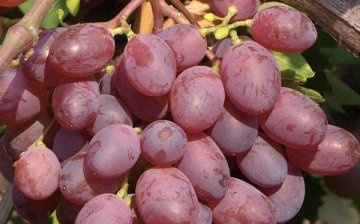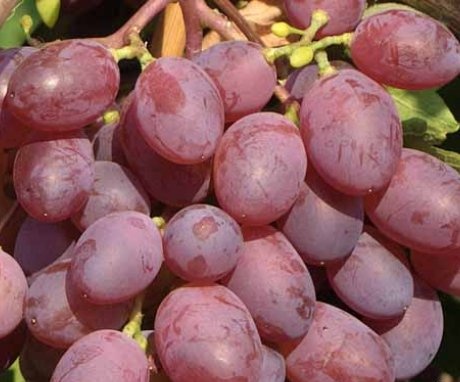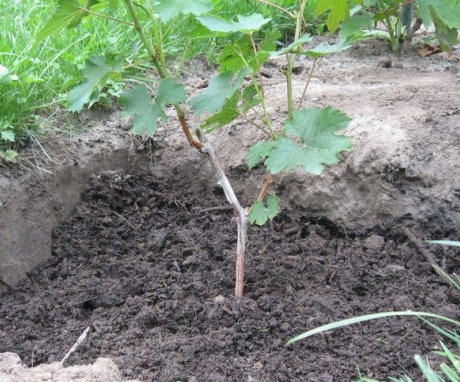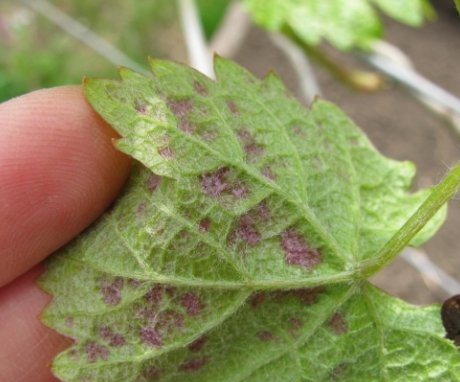Victoria grape variety: description and agricultural technology
The choice of table grape varieties is demanding, because in addition to excellent taste, they must have an excellent presentation. The fruits of the plant are used for fresh consumption, for desserts, decorating dishes. And here the external characteristics of the berry are important.
Although grapes belongs to thermophilic crops, but varieties have been bred that are not afraid of unfavorable conditions for growth, easily overcome climatic difficulties. Victoria belongs to such time-tested varieties of a fruit plant. Table grapes of early ripening were bred in Russia, therefore they are found everywhere in our gardens.
Content:
- Description and benefits of the Victoria grape variety
- Planting a vine: timing and rules
- Care tips: watering, feeding and pruning
- Disease prevention, grape pest control
Description and benefits of the Victoria grape variety
The hybrid form of the plant, obtained by complex crosses of frost-resistant species with a stable donor SV-12-304, has the properties of a winner in the fight against low temperatures down to minus 27 degrees, fungal diseases.
Variety characteristic:
- The vine is a weakly growing bush, covered with dissected leaves with slight pubescence.
- The ripening time of the berries of the variety is from 114 to 125 days, which indicates the harvest in late August - early September.
- Fruits weighing over 7 grams have a reddish tint, juiciness, fleshiness. They taste sweet with a slight nutmeg flavor.
- In conical clusters, the berries adhere to each other with a moderate density. The weight of the brush reaches up to seven hundred grams.
- The ripening degree of the vine is high. Grapes pleases with the first fruits already in the second year after planting.
To increase the yield of Victoria with a female type of flower, it is necessary to plant pollinator varieties nearby - Aleshenkin, Alpha. The color of the peel of Victoria's berries will accordingly be darker or lighter, depending on the shade of the fruit on the neighboring vine. The Victoria grape belongs to the fruit that tolerates transportation well, retaining its presentation for a long time.
Planting a vine: timing and rules
It is better to plant a vineyard in the spring in the second half of May on the southern slopes of the site. There are some rules for planting grape seedlings:
- A pit 80 centimeters deep is prepared in advance by pouring fertile soil into it, adding one hundred grams of superphosphates, fifty grams of potassium salt.
- In annual seedlings, before planting, the roots are shortened to twenty centimeters, the aerial part to two strong buds. They are left above the soil level.
- After planting buds spud earth by six centimeters. They shouldn't bloom prematurely.
- The shoots obtained from the buds are tied to vertically placed stakes.
- The stepchildren, who have grown on them, pinch over the second or third sheet. And new shoots that have emerged from the ground break out.
- At the end of summer, the tops of the shoots need to be pinched, and in mid-October, the entire unripe part of the vine should be cut off.
- For the winter, the grapes are untied from the stakes and laid in prepared trenches or on the ground.Then they cover everything with a layer of earth, humus. In the spring, the vine is dried, pruned.
Proper planting and care in the first months of life will allow grapes to grow stronger and give high yields of berries.
Care tips: watering, feeding and pruning
Variety grape victoria requires competent care during the entire time of development, fruiting of the vine:
- Despite the fact that grapes belong to drought-resistant crops, they must be watered up to three times over the summer, pouring two or three buckets of water under the bush. The last watering period falls on the first days of October.
- The vineyard soil must be regularly loosened, removing weeds.
- Twice a summer, thin roots are removed from the bushes at a depth of twenty centimeters. To do this, the soil is raked around the plant to the appropriate depth.
- Top dressing begins in the fall, adding twenty grams of potassium salt per square meter, forty grams of superphosphate. In the spring, add 15 grams of ammonium nitrate to them. During the growing season, the vines are fed with bird droppings diluted in a bucket of water. At the end of summer - one hundred grams for each bush wood ash on a bucket of water.
- To prepare the plant for winter, to improve the yield in the fall, carry out pruning grapes. Before the procedure, dried berries and shoots are removed from the bushes. First, branches 20 centimeters long are removed, and a tenth of the long ones are cut off. To form a fruit arrow, all high shoots are shortened to 12 eyes, and 5 are left on the lower ones. Pruning helps to unload the vine, leaving up to 25 eyes on it. This procedure will increase the number of fruits from one bush.
So that after wintering the grapes can bear fruit well, it is necessary to follow the rules for caring for the Victoria variety.
Disease prevention, grape pest control
With medium resistance to fungal diseases, the variety can be exposed to pathogenic viruses. Symptoms of the disease include the death of inflorescences, a slowdown in the growth of vines, curling of leaves, and variegation of color.
Usually it is very difficult to fight viruses, here you have to protect other bushes from damage. To do this, diseased plants are uprooted with subsequent burning. Nothing should be planted on an infected site for five years. To prevent the disease, the vines are regularly trimmed, and the fallen leaves are collected and burned. Well-ventilated bushes rarely succumb to disease.
Will create reliable protection against bacteria by spraying the bushes with a four percent solution of ferrous sulfate.
If the vine shows signs of gray rot, powdery mildewthen they will be dealt with fungicidal preparations... They are bred in water, processing the bushes twice a season with an interval of ten days.
Pests of grapes:
- Of the pests, the miner moth loves grapes. She attacks the bushes when the leaves have already blossomed, making moves in them. The foliage begins to turn yellow, dry out, crumble, which negatively affects the harvest. To get rid of the insect will help spring processing "Confidor", digging the soil with the removal of plant waste.
- The sap of the plant feeds on the grape cushion, which belongs to the family of false shields. It attaches to the shoots so tightly that it is difficult to cope with it. Before the leaves bloom, it is necessary to spray the bushes with "Nitrafen" or remove the parasite manually.
- The larvae of the grape gnat form swellings on the leaves, deforming them. They hibernate in old foliage. Insecticides and burning plant residues will help with the parasite.
- Females of the grape itch mite winter in a similar way. And as soon as the first leaves appear, they lay on their lower surface, feeding on the juices of green tissues. Their effect can be seen by the yellow, light spots on the leaves. To eliminate the pest, the vine is treated with acracides three times at intervals of a week.
- Wasps love to feast on ripe berries, biting them, sucking out the flesh.Drosophila flies, horseflies, butterflies, which are capable of destroying the entire grape harvest, flock to the smell of fermented juice. To get rid of wasps, you can use plastic bags that are placed on ripe brushes. In this case, it is necessary to constantly ventilate the grape bunches. Traps also help - containers with sweet pulp of watermelon, melon, peach with the addition of a preparation like "Aktara", which does not have an odor. One gram of the product will be enough for one hundred milliliters of liquid.
Good taste, pleasant smells attract many harmful insects to the grapes. The gardener's task is to save the cultivated plant, to preserve the harvest of delicious berries.
More information can be found in the video:
















